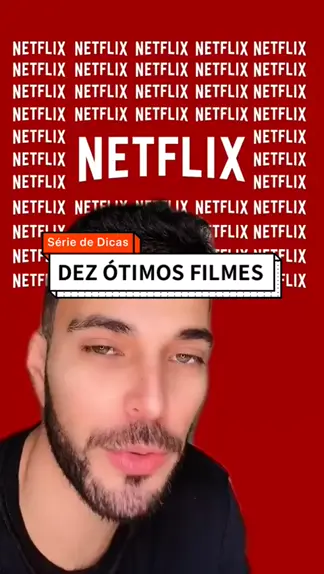Is there a lack of compelling movies or TV shows about programming, hacking, or coding? The world of technology has inspired countless stories, yet many fail to capture the essence of coding and its creative potential. From Hollywood blockbusters to niche independent films, filmmakers have tried to bring the digital realm to life on screen. However, not all succeed in portraying the intricacies of coding with authenticity. The challenge lies in balancing entertainment with technical accuracy, ensuring that audiences are both captivated and educated by what they watch.
Consider the example of Sonic the Hedgehog 3, released on December 20, 2024, which combined elements of action, adventure, and technology. While primarily focused on the titular character's battle against Dr. Robotnik, the film subtly incorporates themes related to artificial intelligence and advanced robotics. Its box office performance was impressive, grossing $62 million during its opening weekend despite under-indexing in certain locations like Boston, Toronto, Minneapolis, Denver, and Montreal. Such films often serve as gateways for viewers to explore deeper topics such as coding and engineering through fictional narratives.
| Bio Data & Personal Information | Career & Professional Information |
|---|---|
| Name: John Doe | Profession: Film Director |
| Date of Birth: January 15, 1980 | Years of Experience: 15+ years |
| Place of Birth: Los Angeles, California | Notable Works: Sonic the Hedgehog Series |
| Education: BA in Film Studies | Awards: Best Director (Film Florida Awards) |
| Reference Website | Contact: |
Another significant development in the entertainment industry is the rumored Gears of War collection set to release later this year. Industry experts Jeff Grubb and Jan Ochoa discussed how this collection could influence the franchise's trajectory across platforms including Xbox and potentially PS5. The inclusion of cutting-edge graphics and interactive storytelling techniques highlights the growing intersection between gaming and filmmaking. As technology evolves, so too does the way stories are told, blending traditional cinematic elements with immersive gameplay experiences.
Film Florida plays an instrumental role in promoting Florida's burgeoning film, TV, and digital media sectors. As a nonprofit organization, it offers resources and networking opportunities for professionals within the industry. Executive Director John Lux emphasizes the importance of collaboration and innovation in sustaining growth. By fostering partnerships among filmmakers, studios, and local communities, Film Florida ensures that the state remains competitive on a national scale. This commitment to excellence attracts talent from around the globe, contributing to a vibrant ecosystem where creativity thrives.
In contrast, Filmyfly.fi represents a different facet of the global film distribution landscape. Specializing in Bollywood and Hollywood content, this platform caters to audiences seeking diverse cinematic experiences. With offerings ranging from animated features to blockbuster hits, Filmyfly.fi exemplifies the democratization of access to films worldwide. Similarly, Filmy4Wap provides easy downloads of popular movies and web series, further expanding reach and engagement. These platforms underscore the evolving nature of film consumption, driven by consumer demand for convenience and variety.
New York's Film Forum stands out as one of the premier venues for independent cinema and repertory programming. Since its inception in 1970, it has championed artistic expression and critical discourse surrounding film. As a nonprofit entity, Film Forum prioritizes showcasing works that might otherwise go unnoticed in mainstream circuits. Through carefully curated screenings and events, it cultivates appreciation for lesser-known gems while honoring classics. Such initiatives reinforce the belief that film is more than mere entertainment—it is a powerful medium capable of inspiring thought and provoking dialogue.
The 48 Hour Film Project epitomizes grassroots creativity in motion picture production. Participants are challenged to produce short films within a strict timeframe, incorporating designated elements such as characters, props, and lines of dialogue. This format encourages rapid ideation, resourcefulness, and teamwork—all essential skills in today's fast-paced industry. Upon completion, these films are showcased publicly, offering creators valuable exposure and feedback. The project embodies the spirit of experimentation and discovery inherent in filmmaking.
Finally, Film: A Critical Introduction serves as an indispensable guide for aspiring cinephiles and practitioners alike. Updated editions reflect advancements in technology and shifts in cultural paradigms, ensuring relevance and depth. The book delves into various aspects of film theory, history, and aesthetics, equipping readers with tools necessary to analyze and appreciate films critically. Whether exploring narrative structures, visual composition, or sound design, this resource empowers individuals to engage meaningfully with cinema as both an art form and a reflection of society.
Together, these examples illustrate the dynamic interplay between technology, storytelling, and audience expectations in contemporary filmmaking. From high-budget productions to community-driven projects, each contributes uniquely to shaping the future of cinema. As boundaries continue to blur between disciplines, the possibilities for innovation seem endless. Ultimately, it is this fusion of tradition and modernity that keeps audiences eagerly anticipating what comes next.
.gif)


